Battle of The CPU Stock Coolers! 7x Intel vs 5x AMD, plus an EVO 212
by E. Fylladitakis on July 22, 2016 9:00 AM EST- Posted in
- Cases/Cooling/PSUs
- CPUs
- AMD
- Intel
- Cooler Master
- Cooler
The Intel Coolers
We have seven Intel coolers to test for the means of this review. Six are stock coolers accompanying processors that the company has released during the past decade and the seventh is the Intel BXTS15A (TS15A) that the company recently released as an aftermarket upgrade.
| Vendor | Cooler | Common Bundle | Core | Fins | Fan (mm) |
Mass (g) |
| Intel | D75716-002 | Socket 775 Celerons | Alu | Alu | ≈80 | 118 |
| C25704-002 | Socket 775, P4 6x0 | Cu | Alu | ≈80 | 132 | |
| E97378-001 | Socket 1155 Intel i5 | Cu | Alu | ≈80 | 146 | |
| E97379-001 | Socket 1155 Intel i3 | Alu | Alu | ≈80 | 92 | |
| D60188-001 | Socket 775, C2D E8x00 | Cu | Alu | ≈80 | 419 | |
| E31964-001 | Socket 1366 i7-X | Cu | Cu/Alu | ≈100 | 435 | |
| BXTS15A | Aftermarket, ≈$30 | Cu | Alu | ≈80 | 362 |
The Intel C25704-002 and Intel D75716-002 probably are the oldest coolers in this review. These were usually accompanying Socket 775 Intel Celeron and Pentium 4 “Prescott” processors several years ago. They are of nearly identical size and very similar in terms of design, with the exception that the D75716-002 has an aluminum core and a less powerful fan.
Intel C25704-002 and D57516-002
The Intel D60188-001 is essentially an overgrown C25704-002. Intel has been receiving a lot of criticism back in the day for having noisy stock coolers, therefore they nearly doubled the mass of the C25704 and used a significantly less powerful fan. The Intel D60188-001 usually was the stock cooler accompanying high performance Core 2 Duo processors.
The E97378-001 and the E97379-001 look almost identical and their ID numbers are very close, but major differences can be discerned when the coolers are turned upside down. Aside from the E97378 having a copper core, the E97379 has significantly lower mass and straight fins, hinting the use of a more powerful fan. Bent pins cause significant turbulence at high airflows and unnecessarily increase the cooler’s noise output.
Intel E97378-001 and E97379-001
Intel’s first attempt to design a high performance cooler was probably the Intel E31964-001, the stock cooler of socket 1366 i7 Extreme processors. They kept the core design the same but replaced half of the aluminum fins with copper fins and used a semi-transparent fan with blue LEDs. The mix of aluminum and copper fins creates a “flower” visual effect similar to that first seen on Zalman CNPS coolers nearly two decades ago. The straight fins and very high current rating of the fan hint that the Intel E31964-001 is not designed with silence in mind.
The Intel BXTS15A is an aftermarket cooler sold by Intel as an upgrade for socket 1151 CPUs but will also fit on older 1150/1156 processors. A mere glimpse on the cooler reveals that it is just an oversized version of the company’s stock coolers, mostly just much taller than what they have been supplying alongside with the CPUs. It is almost identical to the E31964-001, but has only aluminum fins and they are taller. It also has straight fins and a very strong fan, hinting that this will not be a silent cooler either.


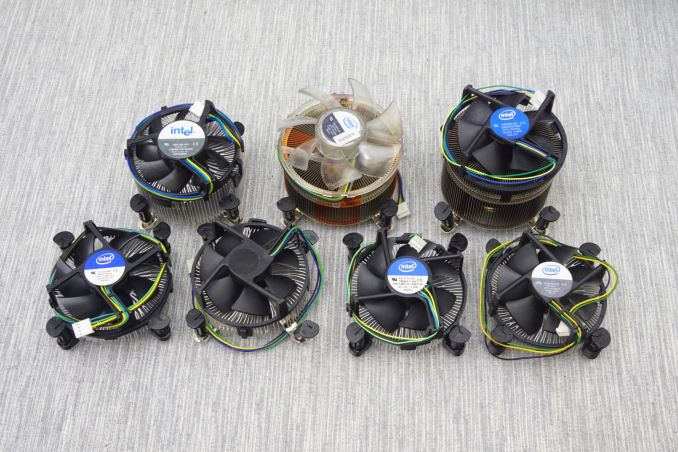
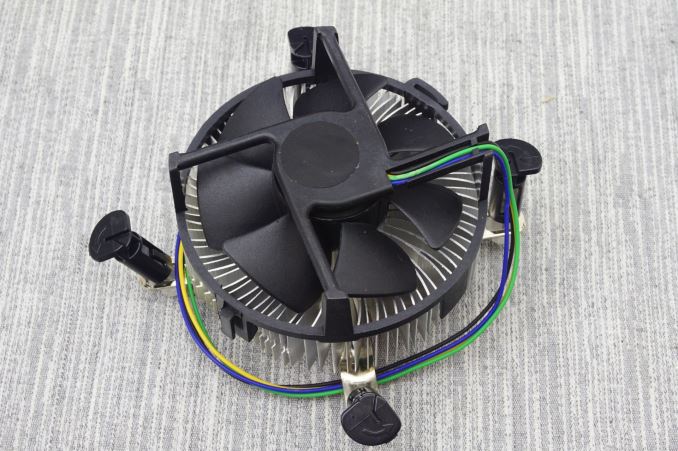
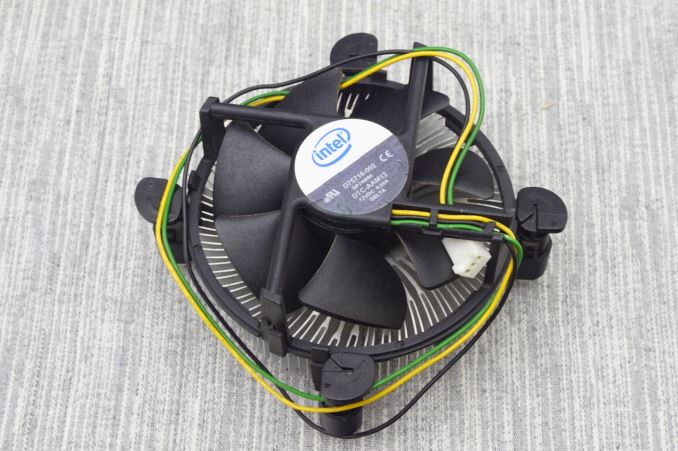

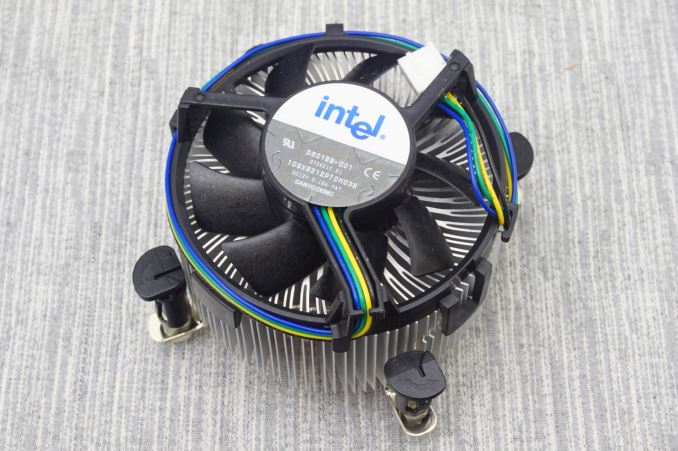

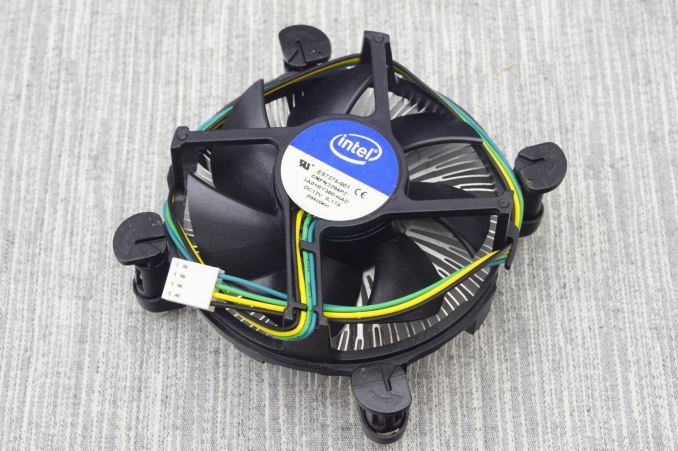
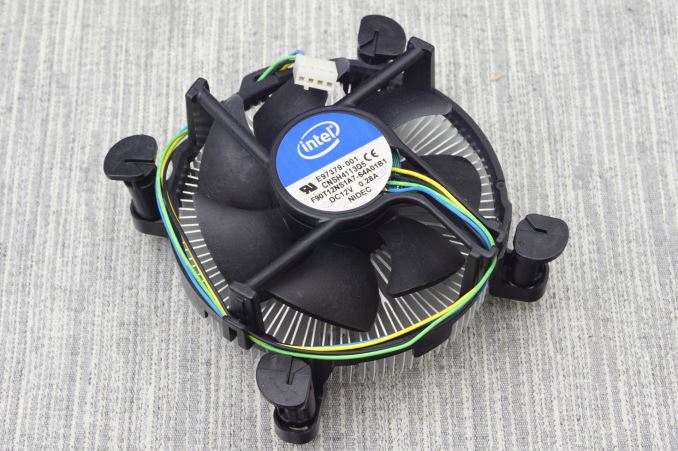
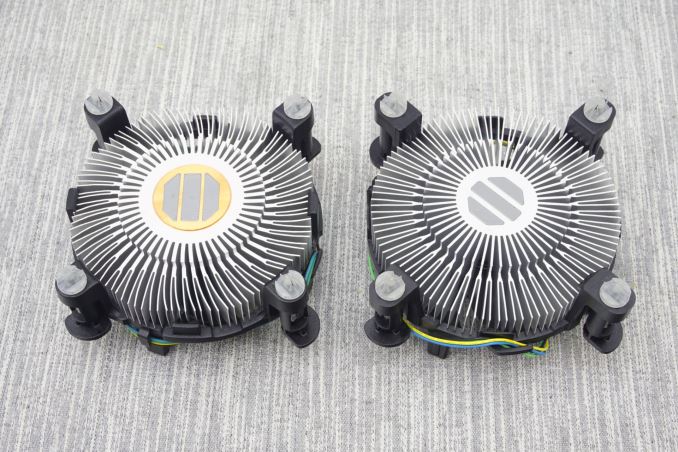
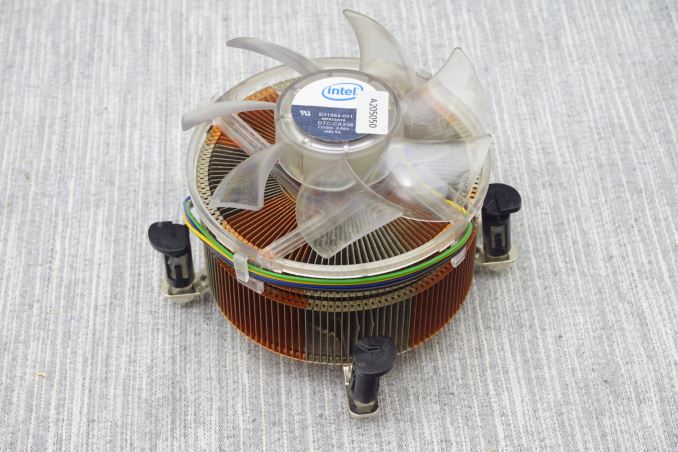
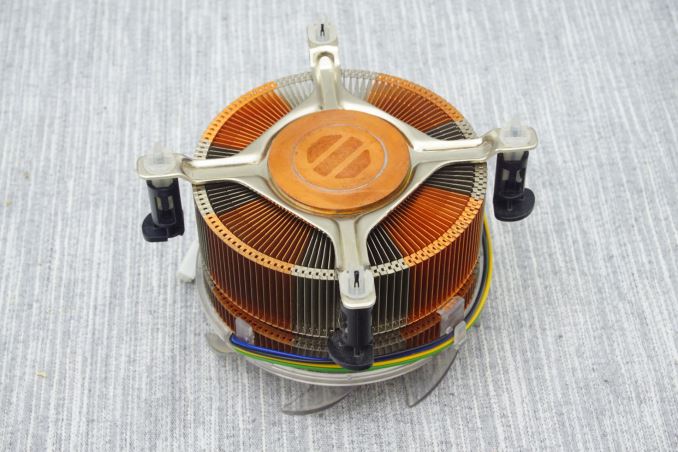
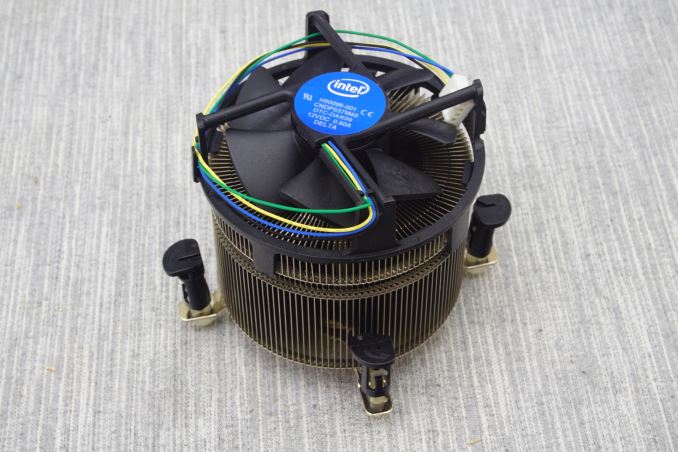
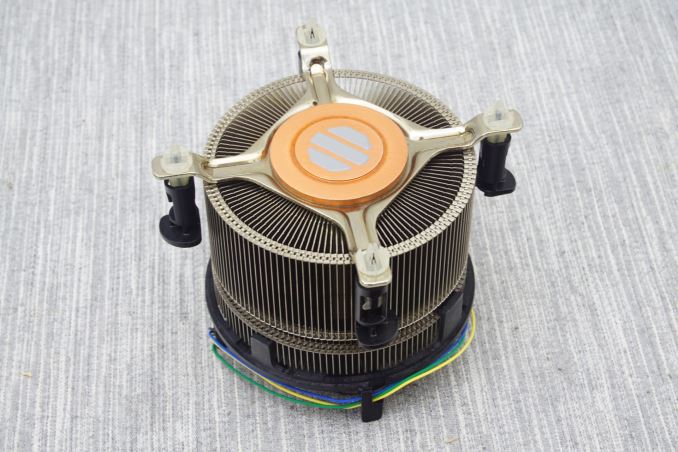








82 Comments
View All Comments
bigboxes - Friday, July 22, 2016 - link
Yup. My Athlon X2 4400+ (Toledo) came with a 4-pipe cooler as well. Never used the stock HSF when it was in my main rig. Got a Zalman which was badass at the time. Used the stock HSF when I moved the Athlon 3200+ (Winchester) to my file server.Marburg U - Friday, July 22, 2016 - link
OK, but just to recall that DB scale is a logarithmic scale. And the difference between 44.7 and 46.3 is roughly 45% power ratio!!!ZeDestructor - Friday, July 22, 2016 - link
Perceptually though, odds are you won't observe a difference in loudness (tone is a whole different ballgame): 3dB is the generally accepted number for human hearing to be able to perceive a difference in volume, and 10dB for a perceptual halving of volume.DanNeely - Friday, July 22, 2016 - link
But also remember that your ears are a logarithmic sensor. So while 10 dB is 10x the sound intensity, it only sounds twice as loud. In this case the 1.6 dB only corresponds to sounding about 15% louder; which is barely noticeable. Other factors like your case material (type, thickness, if sound deadening material is present, locations of fan holes, etc) affecting how much sound gets out from the CPU cooler; and the number, type, and layout if your case fans affecting how hot the internal ambient is and how hard your CPU cooler has to work will all have more significant impacts on how loud your system is.pseudoid - Friday, July 22, 2016 - link
Ummmmm....Logarithmic scale to measure Sound Pressure Levels (SPL) are normally a relative measurement based on voltage (not power). As such, an order of magnitude increase (10X) results in a 20dB (not 10dB) increase in SPL. Keeping with the same SPL measurements, a doubling (octave) or an increase of twice as loud (2x) is a 6dB increase! No need to bring up Fletcher-Munson curves into this correction. Cheers!
hailey14 - Friday, July 22, 2016 - link
"With bulk PC orders it is, of course, a "difference" scenario..."some typo.
Calculatron - Friday, July 22, 2016 - link
Wow, I knew the Wraith cooler is good, but I didn't realize that it was that good.I have the "quiet" 125 TDP cooler solution, which is the Wraith Cooler without the fancy shroud - same heatsink and fan, though. Maybe I'll keep it around...
Lolimaster - Friday, July 22, 2016 - link
The thing intel non 2011 socket cpu's uses complete trash internal dissipation compound, another reason to not sell it with stock cooler.Even with a decent one (juper 212z) you see load temps of 75°C without OC. Meanwhile their new Broadwell-E stays within the 50°C (+/- 2°C) with a similar cooler.
AMD didn't screw up users with the IHS dissipation.
ZeDestructor - Sunday, July 24, 2016 - link
As many have stated before, Intel has to use TIM on the small cores because the small cores crack from repeated thermal shock when soldered to the IHS. Intel doesn't want to screw you over, but they literally have to! Or do you want 32nm and larger lithographies back?Ascaris - Sunday, July 24, 2016 - link
They could use a bigger chunk of silicon wafer to help with heat dissipation/bond to the IHS without printing anything on it. It's not as if the smaller litho chips have gotten cheaper because of less silicon usage!